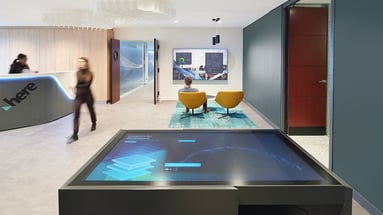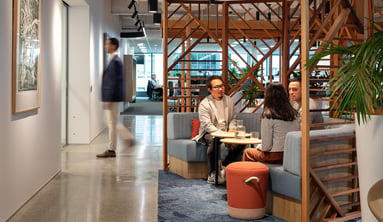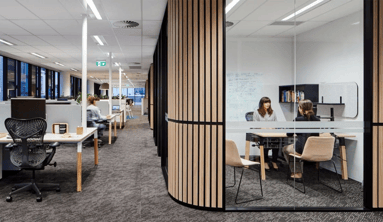Navigating Work, Workforce and Workplace in light of a Nationwide Implementation of Flexible Work Arrangements
As Singapore prepares for a nationwide implementation of flexible work arrangements, organizations must navigate various challenges and opportunities.
Written by Jianhan Qiu, Principal, Strategy, Asia
A recent Randstad survey released in April 2024 showed that 1 in 2 workers in Singapore will quit their job if asked to be in office more often, with 70% of Gen Z respondents agreeing with this statement. In this article, we explore how employers can approach and implement flexible work arrangements while addressing potential trade-offs and ensuring that workplaces are equipped to handle the demands of a new era of work.
From 1st December 2024, new tripartite guidelines come into effect where all employers must have a process in place for workers to make formal requests for flexible work arrangements. The three types of flexible work arrangements include:
- Flexi-place: choice of location of work
- Flexi-time: duration of work including staggered hours, flexible shifts and compressed work schedule e.g., 4-day work week
- Flexi-load: varied workloads including job sharing and part-time work
Aimed at fostering greater work-life balance and adaptability in the workforce, the spotlight turns to how employers will navigate the implementation of such initiatives while ensuring operational efficiency and employee well-being.

Approaching and Implementing Flexible Work Arrangements
While “flexi-place” arrangements such as hybrid working has been widely implemented, “flexi-time” and “flexi-load” arrangements remain new to most companies. Employers must assess their readiness for change by engaging in dialogue with employees and stakeholders. Insights gathered can inform tailored strategies for implementation, including compressed work schedules or job redesign to accommodate flexibility. Job redesign efforts can involve breaking down job scopes into tasks that can be performed both onsite and remotely.
For instance, both receptionist and personal assistant roles typically require on-site presence despite having tasks that could be executed remotely. Although these roles are held as separate positions, these roles often share overlapping skill sets. Through job sharing initiatives, both colleagues can rotate covering on-site responsibilities. For instance, during week 1, colleague A can be present at the reception counter while colleague B conducts administrative tasks remotely from home. Their roles can then switch in week 2 and onwards. This alternating arrangement allows the ability to work remotely on alternate weeks, offering flexibility while ensuring operational efficiency.

Navigating Potential Trade-Offs and Challenges
Adopting flexible work arrangements entails trade-offs for employees, such as longer work hours or increased on-site presence. Transparent communication is crucial to ensure employees understand these trade-offs and can make informed decisions.
Can employees maintain productivity in a compressed work schedule of 10 work hours per day? Are work processes and client expectations aligned with the new schedule? Do managers expect a physical office presence of four days per week? Are offices equipped to support increased occupancy? Companies with desk sharing arrangements might face insufficient ergonomic spaces. Imagine the worst scenario: a company enforces a 4-day in-office work week without enough ergonomic spaces, with employees left to occupy touchdown spaces and café seating for 10 hours per day.
Employers must conduct a thorough assessment of space utilisation, technology infrastructure and operational workflows to address these considerations effectively.

Rethinking Work, Workforce and Workplace
The workplace is only a piece of the puzzle. As Singapore embraces flexible work arrangements, employers have an opportunity to redefine the future of work. Employers must consider the human factors involved in the transition to flexible work arrangements. This entails providing adequate training and support for employees, redesigning job scopes and evolving the workplace to accommodate the new era of work.

Need assistance in navigating these changes? Reach out to us today for expert guidance and support tailored to your organisation's needs.
About Unispace Change Management
Change management is a process that runs from the very start of a project through to its completion. We engage with decision makers, key stakeholders and your wider teams to guide them on a journey based on each project’s individual goals. Our team of workplace strategists and change managers bring a wealth of knowledge to transform the way your people work.
Additional Resources:
Download our change management guide today: Changing the Work Experience for Today and Tomorrow


